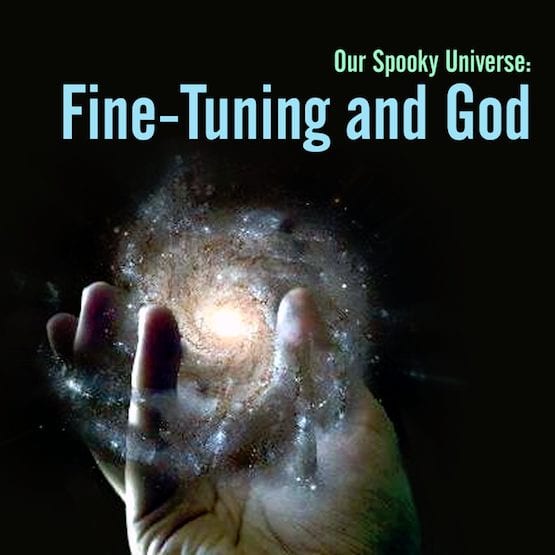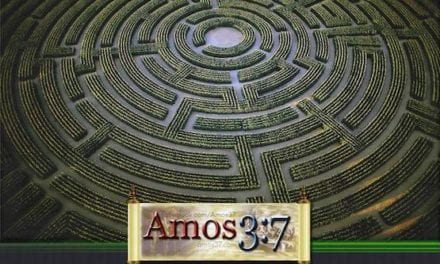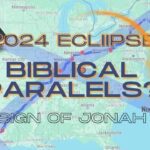Many Scriptures tell us Creation principles here in Job, quite possibly the oldest book of the bible comes this statement to Job,
“Where wast thou when I laid the foundations of the earth? declare, if thou hast understanding.” Job 38:4
These highly precise and interdependent environmental conditions (which are called “Anthropic Constants” make up what is known as the “Anthropic Principle.” “Anthropic” comes from the Greek word that means “human” or “man”. The “Anthropic Principal” is just a fancy title for the mounting evidence that has many scientists believing that the universe is extremely fine-tuned (designed) to support human life here on earth.
Anthropic Principle: The Design Is In The Details
Excerpt from
“I Don’t Have Enough Faith to Be an Atheist” by Norman L. Geisler and Frank Turek.
Scientists are now finding that the universe in which we live is like a diamond studded Rolex, except the universe is even more precisely designed than the watch. In fact, the universe is specifically tweaked to enable life on earth. A Planet with scores of improbable and inter-dependent life- supporting conditions that make it a tiny oasis in a vast and hostile universe. The extent of the universe’s fine-tuning makes the Anthropic Principle perhaps the most powerful argument for the existence of God.
These highly precise and interdependent environmental conditions (which are called “Anthropic Constants” make up what is known as the “Anthropic Principle.” “Anthropic” comes from the Greek word that means “human” or “man”. The “Anthropic Principal” is just a fancy title for the mounting evidence that has many scientists believing that the universe is extremely fine-tuned (designed) to support human life here on earth.
It’s not that there are just a few broadly defined constants that may have resulted by chance. No, there are more than 100 very narrowly defined constants that strongly point to an intelligent Designer.
Astrophysicist Hugh Ross has calculated the probability that these and other constants (122 in all) would exist today for any planet in the universe by chance (I.e., without Divine design). Assuming there are 1022 planets in the universe (a very large number: 1 with 22 zeros following it), his answer is shocking; one chance in 10138, that’s one chance in one with 138 zeros after it. There are only about 1070 atoms in the entire universe.
In effect, there zero chance that any planet in the universe would have the life-supporting conditions we have, unless there is an intelligent Designer behind it all.
Here are fifteen of them.
Anthropic Constant 1: Oxygen Level
On earth, oxygen comprises 21 percent of the atmosphere. That precise figure is an Anthropic Constant that makes life on earth possible. If oxygen were 25% fires would erupt spontaneously, if it were 15%, human beings would suffocate.
Anthropic Constant 2: Atmospheric Transparency
If the atmosphere were less transparent, not enough solar radiation would reach the earth’s surface. If it were more transparent we would be bombarded with far too much solar radiation down here. (In addition to atmospheric transparency, the atmospheric composition of precise levels of nitrogen, oxygen, carbon dioxide and ozone are in themselves Anthropic constants).
Anthropic Constant 3: Moon-Earth Gravitational Interaction
If the interaction were greater than it currently is, tidal effects on the oceans, atmosphere, and rotational period would be too severe. If it were less, orbital changes would cause climatic instabilities. In either event, life on earth would be impossible.
Anthropic Constant 4: Carbon Dioxide level
If the CO2 level were higher than it is now, a runaway greenhouse effect would develop (we’d all burn up). If the level were lower than it is now, plants would not be able to maintain efficient photosynthesis (we’d all suffocate).
Anthropic Constant 5: Gravity
If the gravitational force were altered by 0.00000000000000000000000000000000000001 percent, our sun would not exist, and, therefore neither would we. Talk about precision.
Anthropic Constant 6: Centrifugal Force
If the centrifugal force of planetary movements did not precisely balance the gravitational forces, nothing could be held in orbit around the sun.
Anthropic Constant 7: Rate Of Expansion
If the universe had expanded at a rate one millionth more slowly than it did, the expansion would have stopped and the universe would have collapsed on itself before any stars had formed. If it had expanded faster, then no galaxies would have formed.
Anthropic Constant 8: Speed Of Light
Any of the laws of physics can be described as a function of the velocity of light (now defined to be 299,792,458 meters per second). Even a slight variation in the speed of light would alter the other constants and preclude the possibility of life on earth.
Anthropic Constant 9: Water Vapor Levels
If water vapor levels in the atmosphere were greater than they are now, a runaway greenhouse effect would cause temperatures to rise too high for human life. If they were less, an insufficient greenhouse effect would make the earth to cold to support human life.
Anthropic Constant 10: Jupiter
If Jupiter were not in its current orbit, the earth would be bombarded with space material. Jupiter’s gravitational field acts as a cosmic vacuum cleaner, attracting asteroids and comets that might otherwise strike the earth.
Anthropic Constant 11: The Earth’s Crust
If the thickness of the earth’s crust were greater, too much oxygen would be transferred to the crust to support life. If it were thinner, volcanic and tectonic activity would make life impossible.
Anthropic Constant 12: The Earth’s Rotation
If the rotation of the earth took longer than 24 hours, temperature differences would be too great between night and day. If the rotation period were shorter, atmospheric wind velocities would be too great.
Anthropic Constant 13: Axis Tilt
The 23-degree axis tilt of the earth is just right. If the tilt were altered slightly, surface temperatures would be too extreme on earth.
Anthropic Constant 14: Atmospheric Discharge
If the atmospheric discharge (lightning) rate were greater, there would be too much fire destruction; if it were less there would be little nitrogen fixings in the soil.
Anthropic Constant 15: Seismic Activity
If there were more seismic activity, much more life would be lost; if there were less, nutrients on the ocean floors and in river runoff would not be cycled back to the continents through tectonic uplift. (yes, even earthquakes are necessary to sustain life as we know it).
Life in our universe is so improbable that it defies a natural explanation.
www.y-origins.com
In his movie Signs, M. Night Shyamalan presents us with a priest (played by Mel Gibson) who has lost his faith. Through the death of his wife, the priest has come to the conclusion that life is random. He has decided that he will no longer pretend to see God in the picture.
As Shyamalan zooms in his lens, he shows us that life is without focus: there is no recognizable pattern. But typical of Shyamalan, he turns the lens one more screw to the right, and at this magnification, a pattern emerges. Gibson’s character is able to see the hand of a great Designer lurking behind all that had seemed random. His wife’s dying words, his daughter’s obsession with water, his son’s asthma—everything served a larger purpose.
At the end, Mel Gibson returns to the priesthood and makes a blockbuster called The Passion of the Christ. Well, not exactly, but his character comes full circle—from faith to skepticism and back to faith. Meanwhile, Shyamalan takes his audience on the same circuitous journey, exploring issues of design and higher purpose in the world.
In many ways, the evidence for intelligent design of the universe has come full circle. When early humans looked at the heavens, they could not escape the concept of a Creator. In fact, until the 1500s, most people believed in the ancient astronomer Ptolemy’s teaching, that Earth was the center of the universe.
But, in the 16th century, Copernicus showed that Earth revolved around the Sun. Suddenly our planet seemed less special. Some astronomers looked out at the universe through telescopes and deduced a Creator was unnecessary. Their argument for a materialist worldview was energized by the belief in an ordinary Earth. Although the founders of modern astronomy strongly believed that the universe was the work of a cosmic genius, these later followers saw the cosmos as totally autonomous and independent of a Designer. Copernicus, a strong believer in God, couldn’t have disagreed more with such an assumption and would have taken exception to it. In the 19th century, this belief in an ordinary Earth became popularized as the “Copernican Principle.” This principle has become the bedrock for a materialistic view of the world. However, new scientific discoveries are challenging its premise. In the latter part of the 20th century, evidence began pouring in about the remarkable fitness of Earth for life, compelling many scientists to reconsider the obvious implication that an intelligent Designer is behind it all.
Scientists have learned that only an exceptionally fine-tuned planet like Earth has the necessary ingredients to harbor life. Additionally, our solar system and galaxy, as well as our entire universe, appear designed to support intelligent life.
The odds that such fine-tuning could have occurred by chance is not just unlikely–scientists say it is virtually impossible.
Our Solar System: Evidence of Creation
THEY DON’T CALL THESE NUMBERS ASTRONOMICAL FOR NOTHING
An article in U.S. News & World Report remarks, “So far no theory is even close to explaining why physical laws exist, much less why they take the form they do. Standard big bang theory, for example, essentially explains the propitious universe in this way: ‘Well, we got lucky.’ ” 1
On Christmas Day in 2002, Jack Whitaker, of Scott Depot, West Virginia, got lucky, becoming the largest single-ticket lottery jackpot winner ever in North America. His prize? A Powerball jackpot of $314.9 million. Over a hundred million other tickets didn’t match. What are the odds of that? (And what are the odds that every time I go to the Quikie-Mart I’m stuck in line behind someone purchasing several dozen tickets?)
If someone won even two such lotteries consecutively, we would all assume the results were rigged. And yet, when it comes to life existing in our universe, the odds are far more remote than winning a hundred Powerball lotteries consecutively.
Physicist Paul Davies comments, “The conclusion must be that we live in a world of astronomical unlikelihood.”2
- Donald Page of Princeton’s Institute for Advanced Study has calculated that the odds against our universe randomly taking a form suitable for life is one out of 10124, a number beyond imagination. 4
To try and visualize the difficulty, imagine all the grains of sand on all the beaches on Earth. Then encrypt one grain with a special code known only to you, and randomly bury that grain on a beach somewhere on Earth. (Maybe enjoy a vacation in Maui while you’re at it).
The chance a blindfolded person would ever discover that one grain of sand on their first pick is one out of 1020 (one chance in 100 billion billion.) Yet, scientists tell us that the likelihood of a big bang explosion resulting in a universe able to support life like ours is many times more improbable.
Now offer a reward to anyone who can find it on one pick, even though they don’t know which beach to scour, or how deep it is buried. But what if they did? Would anyone believe they discovered it by accident? Yet, scientists tell us that the likelihood of a big bang explosion resulting in a universe able to support life like ours is many times more improbable.
As we consider the odds for the fine-tuning of our universe, galaxy, solar system, and the planet, let’s keep in mind just how extreme these odds really are. Not just one, but all of them require unbelievably precise fine-tuning. Can such precision be a result of anything other than design? Let’s take a look at why scientists are baffled.
A FINELY TUNED UNIVERSE
Dr. Robin Collins states in The Case for a Creator, “Over the past thirty years or so, scientists have discovered that just about everything about the basic structure of the universe is balanced on a razor’s edge.”5 Over 35 different characteristics of the universe and its physical laws must be precisely fine-tuned for physical life to be possible.6 Following are six of those characteristics:
A large enough expansion rate. The birth of the universe had to begin with enough force, or life couldn’t exist. Stephen Hawking states, “If the rate of expansion one second after the big bang had been smaller by even one part in a hundred thousand million million, the universe would have recollapsed before it ever reached its present size.”7
- A controlled expansion rate. Although the expansion rate had to be great enough for the universe to avoid a big crunch, if its outward force had been even a fraction greater, that would have been too much for gravity to form stars and planets. Life could never have been possible.8
- Force of gravity. If the gravitational force were altered by 0.00000000000000000000000000000000000001 percent, neither Earth nor our Sun would exist—and you would not be here reading this.9
- The balance of matter and antimatter. In the formation of the universe, the balance between matter and antimatter, and the excess of matter over antimatter needed to be accurate to one part in ten billion for the universe to arise.
- The mass density of the universe. For physical life to exist, the mass density of the universe must be fine-tuned to better than one part in a trillion trillion trillion trillion trillion (1060).10 Thus, the mass contained in all dark and visible matter, including stars, is essential for the existence of our universe.
- Space-energy density. The space-energy density of the universe requires much greater precision than the mass density. For physical life to be possible, it must be fine-tuned to one part in 10120. 11
While the design of the universe has been gradually unfolding over vast periods of time, all of this minute fine-tuning was programmed into the initial conditions of the first microsecond of the big bang. At that instant the rate and ratios of expansion, mass, density, antimatter, matter, etc., were set in place, eventually leading to a habitable planet called Earth.
In addition to the 35 different characteristics of our universe that must be just right for life to exist, over 100 characteristics of our galaxy, solar system, and planet needed to be fine-tuned or we would not be here.12
A FINELY TUNED GALAXY
Galaxies are clusters of stars containing from millions to trillions of stars. Our own galaxy is called the Milky Way. It’s unknown how many galaxies the universe contains, but it may be around a trillion. Surprisingly, given the great number of these star groups, most galaxies are incompatible with life.
In order for life to exist in a galaxy, it needs to meet several criteria.13 The following are just three of the fine-tuned characteristics a galaxy needs to support life:
· Shape of the galaxy. The Milky Way is spiral-shaped. Of the three types of galaxies—elliptical, irregular, and spiral— the spiral type is most capable of hosting human life.
- · Not too large a galaxy. Our Milky Way is enormous, measuring 100,000 light-years from end to end. However, if it were just a bit larger, too much radiation and too many gravitational disturbances would prohibit life like ours.
- · Not too small a galaxy. On the other hand, a stable Earth orbit that is necessary for life could not exist if our galaxy were slightly smaller. And a smaller galaxy would result in inadequate heavy elements, such as iron and carbon, essential to life.
Our Milky Way galaxy meets these and many other conditions essential for life. Most of the others do not.
When we focus in even closer, on our own star and its planets, the odds for life being possible to become even more extreme.
A FINELY TUNED SOLAR SYSTEM
As the story goes, it was the medieval church that believed the Earth to be the center of the universe, with the Sun revolving around it, and it was those boys in the lab, Copernicus, and Galileo, who assigned us a more random place in the universe—like, say, third place.
But things didn’t go down exactly like that. Copernicus and Galileo saw their systems as promoting the Earth, not demoting it. Galileo, in his writings, heralded the fact that Earth reflects the glory of the Sun as humankind reflects the glory of God.
Galileo was right, for our location—our precise location—in the solar system bears the fingerprint of the grand design. Consider just a few of dozens of proofs:
· The Sun’s distance from the center of the galaxy. Our Sun is positioned thousands of light-years from the center of the Milky Way, near one of its spiral arms.14 This is the safest part of the galaxy, away from its highly radioactive center.
- · The Sun’s mass not too large. If the mass of the Sun were a small percentage greater, it would burn too quickly and erratically to support life.
- · The Sun’s mass not too small. On the other hand, if it were smaller, its greater flaring would disrupt Earth’s rotation rate.
- · The Sun’s metal content. Only two percent of all stars have enough metal content to form planets. Too much metal in a star will allow too many planets to form, creating chaos. Our Sun has just the right amount of metal for planets to form safely.
- · Effect of the Moon. The Moon stabilizes the Earth’s tilt and is responsible for our seasons. If it weren’t there, our tilt could swing widely over a large range, making our winters a hundred degrees colder and our summers a hundred degrees warmer.
This is the revolutionary message of Copernicus’s universe. True, back in the old days the Church wasn’t crazy about him messing around with the position of the Earth, and that’s why there aren’t any parochial schools named St. Copernicus. But then, maybe there should be.
A FINELY TUNED PLANET
You may believe that aliens have sent life to Earth from a far distant galaxy (the premise of that memorable drama from 2004, AVP: Alien vs. Predator). You may believe that the government is hiding something outer spatial in Nevada’s mysterious Area 51. Or you may simply believe that there is undoubtedly intelligent life on other planets. In any case, we have all been raised on the assumption that, given enough time, intelligent life will spring up anywhere in the cosmos (with perhaps a few more eyeballs or reptilian features). Yet new evidence from cosmology is really saying the opposite.
The reality is that we live on an extremely rare planet perfectly positioned in an extremely rare solar system, ideally located in an extremely rare galaxy, within a highly improbable universe. Let’s look at our rare Earth.
Water. Earth has an abundance of water, which is essential for life. Mars once had water and therefore might have harbored life. But water is only one of many requirements for life.
Oxygen. Earth is the only planet in our solar system in which we can breathe. Attempting to breathe on other planets, such as Mars or Venus, would be instantly fatal, Mars has virtually no atmosphere and Venus having mostly carbon dioxide and almost no oxygen.
Earth’s distance from the Sun. If the Earth were merely one percent closer to the Sun, the oceans would vaporize, preventing the existence of life. On the other hand, if our planet were just two percent farther from the Sun, the oceans would freeze and the rain that enables life would be nonexistent.
Plate tectonic activity on Earth. Scientists have determined that if the plate tectonic activity were greater, human life could not be sustained and the greenhouse-gas reduction would over-compensate for increasing solar luminosity. Yet, if the activity was smaller, life-essential nutrients would not be recycled adequately and a greenhouse-gas reduction would not compensate for increasing solar luminosity.
Ozone level in the atmosphere.Life on Earth survives because the ozone level is within the safe range for habitation. However, if the ozone level were much greater, there would be too little UV radiation for adequate plant growth. Yet, if the ozone level were much smaller, there would be too much UV radiation for adequate plant growth, and life would be impossible.
For life to exist, these, as well as many other conditions need to be just right.15
ONE BLOOMING ROCK
In a recent book entitled Rare Earth, Peter Ward (professor of geological sciences and curator of paleontology at the University of Washington in Seattle) and Donald Brownlee (professor of astronomy, University of Washington) explore the conditions necessary for life to emerge. They conclude that the conditions favorable for life must be so rare in the universe that “not only intelligent life, t even the simplest of animal life is exceedingly rare in our galaxy and in the universe.”16 This has led their readers to the conclusion expressed by the reviewer from the New York Times: “Maybe we are alone in the universe, after all.”17
Neither Ward nor Brownlee has a theistic agenda (their personal beliefs about God are absent from their text). In fact, on a less cheery note they predict, “This will be the ultimate fate of Earth: life on our planet will eventually be roasted out of existence.” (Thanks for breaking it to us so gently.) Considering such enormous odds one must wonder if we really are alone in this vast universe?
Michael Denton, senior research fellow in human molecular genetics at the University of Otago in New Zealand, poetically summarizes the evidence from the fine-tuned universe:
No other theory or concept imagined by man can equal in boldness and audacity this great claim … that all the starry heavens, and every species of life, that every characteristic of reality exists for mankind. … But most remarkably, given its audacity, it is a claim which is very far from discredited prescientific myth. In fact no observation has ever laid the presumption to rest. And today, four centuries after the scientific revolution, the doctrine is again reemerging. In the last decades of the twentieth century, its credibility is being enhanced by discoveries in several branches of fundamental science.
It seems ludicrous to claim that life exists on only one tiny speck in a universe of ten billion trillion stars. Yet, incredibly, Earth appears to sit alone in a hostile universe devoid of life, a reality portrayed recently in National Geographic:
“If life sprang up through natural processes on the Earth, then the same thing could presumably happen on other worlds. And yet when we look at outer space, we do not see an environment teeming with life.
We see planets and moons where no life as we know it could possibly survive. In fact we see all sorts of wildly different planets and moons—hot places, murky places, ice worlds, gas worlds—and it seems that there are far more ways to be a dead world than a live one.”18
The incredibly precise numerical values required for life confront scientists with obvious implications. Stephen Hawking observes, “The remarkable fact is that the values of these numbers seem to have been very finely adjusted to make possible the development of life.”22
Notes
1. Gregg Easterbrook, “Before the Big Bang,” U.S. News & World Report, special edition, 2003, 16.
2. Paul Davies, Other Worlds (London: Penguin, 1990), 169.
3. Dietrick E. Thompsen, “The Quantum Universe: A Zero-Point Fluctuation?” Science News, August 3, 1985, 73.
4. Quoted in Lee Strobel, The Case for a Creator ( Grand Rapids, MI: Zondervan, 2004).
5. Hugh Ross, The Creator and the Cosmos, 3rd ed. ( Colorado Springs, CO: NavPress, 2001), 224.
6. Stephen Hawking, A Brief History of Time (New York: Bantam, 1990), 121–122.
7. John D. Barrow and George Silk, The Left Hand of Creation: The Origin and Evolution of the Expanding Universe (New York: Basic, 1983), 206.
8. Lawrence M. Krauss, “The End of the Age Problem and the Case for a Cosmological Constant Revisited,” Astrophysical Journal 501 (1998): 461–466.
9. Ross, 53.
10. Ibid., 187.
11. Ibid., 187–193.
12. Guillermo Gonzalez and Jay W. Richards, The Privileged Planet ( Washington, DC: Regnery, 2004), 132–138.
13. Ibid., 132–138.
14. Ross, 175–199.
15. Quoted in Strobel.
16. Quoted in Strobel.
17. Peter D. Ward and Donald Brownlee, Rare Earth ( New York: Copernicus, 2000).
18. William J. Broad, “Science Times,” New York Times.
19. John Achenbach. “Life Beyond Earth,” National Georgaphic (January 2000 Special Millemum Issue), 45.
21. Quoted in Strobel.
22. Ibid., 125.




















How amazing would be, if it was true…
It’s called science.